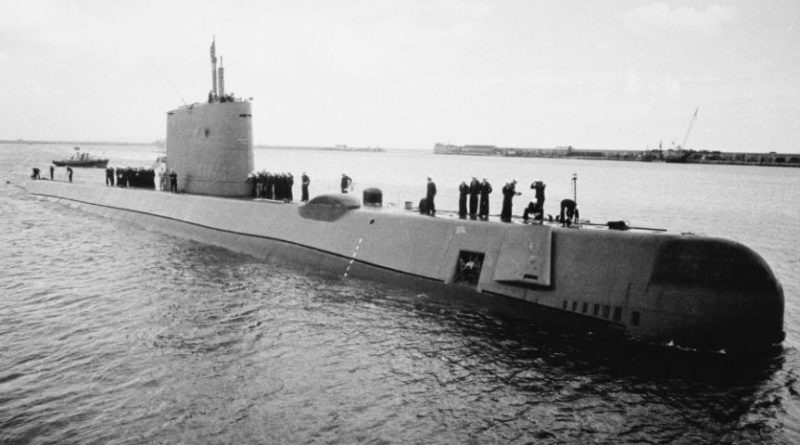THE DAILY PLANET: MILITARY- How the US Navy’s nuclear-powered submarines have quietly dominated the seas for 67 years
USS Nautilus on August 12, 1958. Bob Haswell/Daily Express/Hulton Archive/Getty Images
.
.
.

CAPTAIN AMERICA …….. IS BACK
.
- Sixty-seven years ago, the US Navy launched the world’s first nuclear-powered submarine, USS Nautilus, which went on to break multiple speed, depth, and travel distance records.
- The US Navy has operated no less than 19 classes of nuclear-powered submarines since Nautilus’ introduction — here’s how they’ve evolved over six decades.

January 22 was the 67th anniversary of the launch of the USS Nautilus, the world’s first nuclear-powered submarine.
Launched in 1954, Nautilus broke multiple speed, depth, and travel distance records, with a radical new design that marked the arrival of the nuclear age.
Nuclear-powered submarines have a number of advantages over their diesel-electric counterparts.
They can stay submerged at deep depths indefinitely, can sail at maximum speeds for longer, and can operate for years without refueling. (Modern diesel-electric subs running on batteries can be quieter than older nuclear-powered boats, however.)
Moreover, nuclear-powered subs’ ability to carry submarine-launched ballistic missiles (SLMBs) make them one of the most threatening weapons in service.
The US Navy has operated no less than 19 classes of nuclear-powered submarines since Nautilus’ introduction.

Nuclear-powered attack submarines

Nautilus was designed as an attack submarine, designated SSN.
Displacing 4,092 tons, Nautilus was 323 feet long, 27 feet wide, and armed with six torpedo tubes. It was capable of sailing at over 20 knots on and below the surface and of diving to 700 feet.
Nautilus was the first vessel to reach the geographic North Pole, and the first submarine to make the entire journey submerged – fully opening the Arctic as a theater of warfare for submarines.
Though an attack submarine, it was also an experimental vessel, which was one reason it was the only ship of its class and saw no major action. This was also the case for its successor, USS Seawolf, though Seawolf did tap on Soviet underwater communication lines during Operation Ivy Bells.





 USS Halibut firing a Regulus missile next to USS Lexington, March 25, 1960.
USS Halibut firing a Regulus missile next to USS Lexington, March 25, 1960.  US Navy ballistic-missile submarine USS Woodrow Wilson in San Francisco Bay, January 3, 1964.
US Navy ballistic-missile submarine USS Woodrow Wilson in San Francisco Bay, January 3, 1964.  USS Ohio undergoing conversion to a new class of guided missile sub at Puget Sound Naval Shipyard in Bremerton, Washington, March 15, 2004.
USS Ohio undergoing conversion to a new class of guided missile sub at Puget Sound Naval Shipyard in Bremerton, Washington, March 15, 2004.  USS Virginia after its first voyage in open sea, called “alpha” sea trials, July 30, 2004.
USS Virginia after its first voyage in open sea, called “alpha” sea trials, July 30, 2004.  An artist’s rendering of the future Columbia-class ballistic missile submarine.
An artist’s rendering of the future Columbia-class ballistic missile submarine. 







